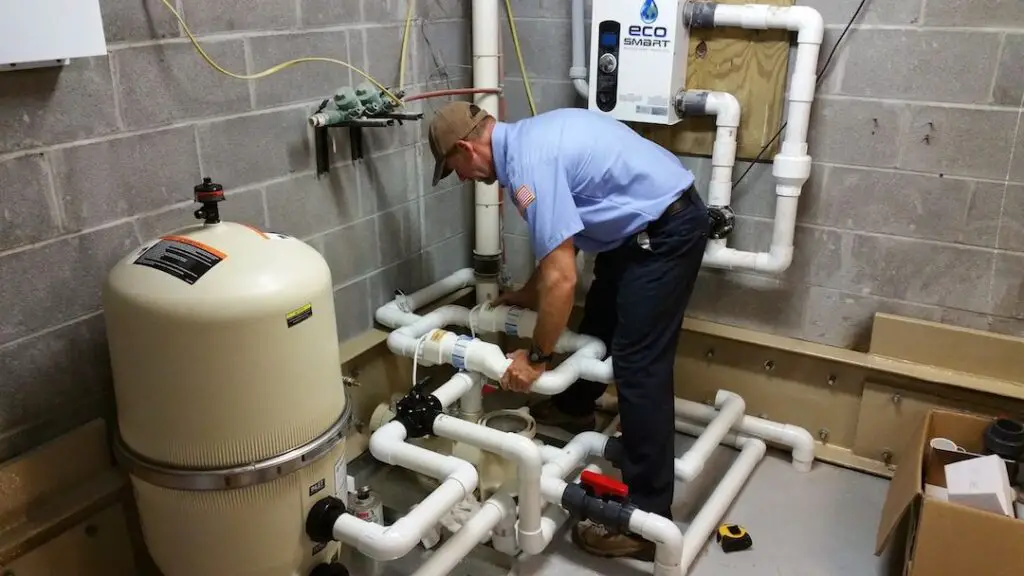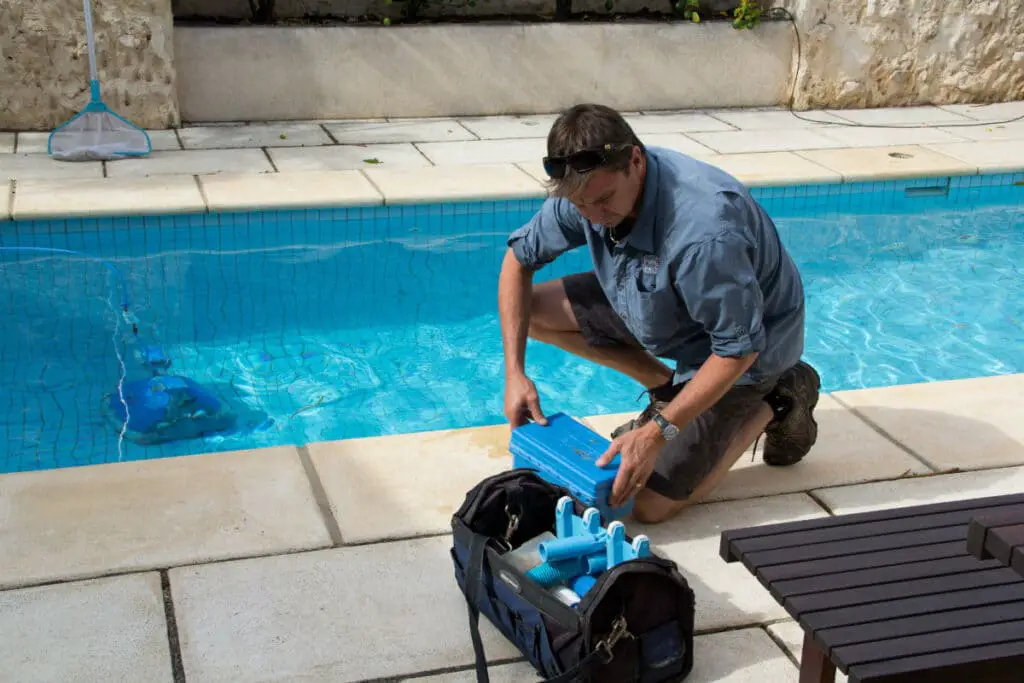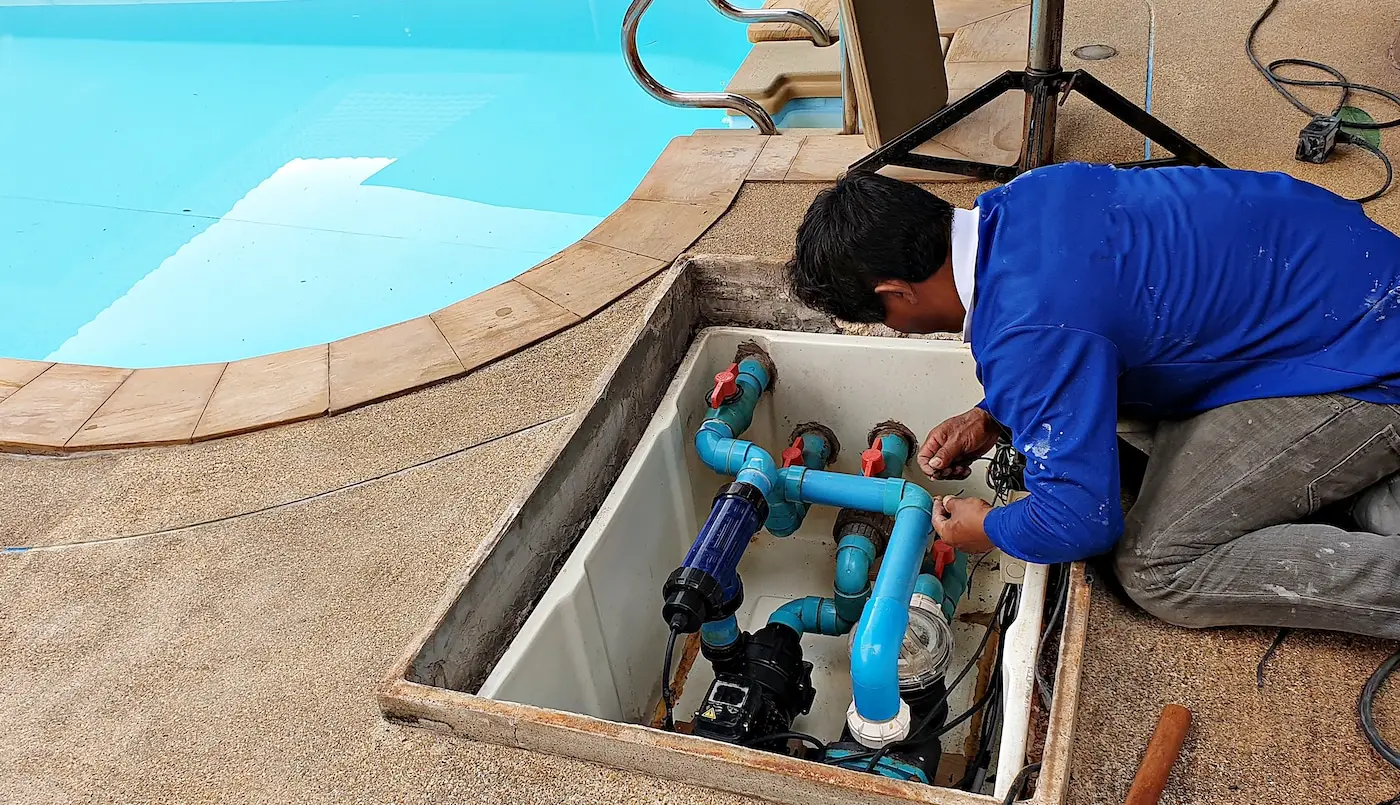How To Find A Leak In Pool Plumbing
Introduction
A pristine, crystal-clear swimming pool is the epitome of relaxation and joy during scorching summer days. However, the serenity of owning a pool can be disrupted when a persistent leak starts draining your pool water and wreaking havoc on the surrounding landscape. Identifying and repairing a leak in pool plumbing is a crucial skill that pool owners must possess to maintain the health and longevity of their beloved aquatic oasis.
Whether it’s a small crack in a pipe or a hidden fault within the pool’s intricate plumbing system, leaks can arise for various reasons, including age-related deterioration, ground movement, and improper installation. Not only do leaks result in excessive water loss and higher utility bills, but they can also cause structural damage to the pool’s foundation and surrounding areas if left unattended.
Finding pool plumbing leaks might be intimidating, but with the correct knowledge and tools, it can be rewarding and cost-effective. This detailed handbook helps pool owners and enthusiasts locate and fix leaks quickly to keep their pool fun for years.
Visual inspection, rigorous testing, and sometimes professional leak detection are needed to find a pool plumbing problem. This article will take you through each stage, from simple DIY to more difficult, depending on the leak’s complexity and plumbing accessibility.

Where Is The Most Common Pool Leak?
Pool leaks most often occur near the skimmer, drains, returns, or tile line. Cracks in the aggregate, marcite, or gunite finish of your pool can leak, depending on its surface type.
Most pools leak in the plumbing system. Many parts work together to circulate and filter water in this system. Unfortunately, wear and tear, ground movement, and installation difficulties can cause plumbing leaks.
Leaks often occur at pipe couplings and connectors. These joints can develop microscopic cracks or fissures that let water escape and moisten the area. Leaks might be hard to spot, but they can cause significant water loss and damage to the pool’s structure and surroundings if left unchecked.
Skimmers, return jets, and pool lights often leak. Pool operation depends on these fittings, which may deteriorate or be damaged by external sources. Water can seep into neighboring structures or the ground from fitting leaks, causing soil erosion and pool instability.
Pool pumps and plumbing connections can leak. Water can leak through seals and gaskets due to the pump’s frequent running and chemical and weather exposure.
How Do You Tell If Inground Pool Pipes Are Leaking?
Air or dirt drawn into the plumbing system by a leak may blow into the pool from the returns.
Since most inground pool plumbing is underground, finding a leak is difficult. There are various ways to tell if your inground pool pipes are leaking.
A substantial drop in the pool’s water level despite continuous evaporation and splashing may indicate a plumbing problem. Check the water level for a few days to see if it keeps falling.
Check the ground around the pool equipment, especially the pump and filter, for wet or soggy spots. These areas may have pipe leaks.
A simple bucket test can distinguish a pool shell leak from a piping leak. Place a pail of pool water on the pool steps to match the pool’s water level.
Dye test: Add a few drops of food coloring into the water around suspected plumbing areas. If the dye gets pulled into a crack or leak, it can reveal the presence of a leak.
How Do I Find A Slow Leak In My Inground Pool?
Inground pool leaks can be found by eye inspection, bucket test, and dye test. Skimmers cause most inground pool leaks. After testing, call a pool repair agency if you can’t find the leak.
Slow leaks are harder to discover since water loss is gradual. With patience and a systematic approach, you can find and fix the slow leak to stop water loss and harm to your pool and surrounding environment.
Monitor your pool’s water level daily for many days. Mark the skimmer or tile water level daily and check it. A slow leak may be indicated by a continuous water level drop.
To distinguish evaporation from a leak, use a bucket test. Put a pail of pool water on the steps so it matches the pool water level. Compare bucket and pool water loss after 24 hours. Pool water loss exceeds bucket water loss, indicating a leak.
Check Pool Equipment: Look for wetness or moisture around the pool pump, filter, and other equipment. These components can cause sluggish plumbing leaks.
If you’ve tried everything and can’t find the sluggish leak, use an expert leak detection service. They use electronic listening devices and pressure testing techniques to find even the smallest inground pool leaks.
Can A Pool Lose Water Without A Leak?
Just because your pool is losing water doesn’t necessarily mean that there is a leak. Natural water loss will occur because of evaporation, especially on sunny days. Heavy use will also cause water to leave the pool due to splashing and swimmers who are exiting the pool.
A pool can lose water without a leak due to a phenomenon known as evaporation. Evaporation is a natural process wherein liquid water is converted into vapor and escapes into the atmosphere. In the case of swimming pools, evaporation is a common occurrence, particularly in warm and sunny climates or during hot summer months.
Several factors can influence the rate of water evaporation in a pool, including:
Temperature: Higher temperatures increase the rate of evaporation as water molecules become more energetic and transition into vapor more rapidly.
Humidity: Lower humidity levels encourage faster evaporation because the air has a higher capacity to absorb moisture.
To distinguish between evaporation and a leak, pool owners can conduct simple tests like the bucket test. By placing a bucket of pool water next to the pool and comparing water loss over a day or two, they can determine if the water loss is consistent with evaporation rates. If the pool loses significantly more water than the bucket, there may be a leak or other water loss problems that warrant further investigation.
How Much Water Loss Is A Pool Leak?
A rule of thumb is to suspect a pool leak if it loses more than ¼” in humid conditions and ½” in dry conditions. Try the test at the end of this post to check for pool leaks.
A pool leak’s water loss depends on its size, location, and undiscovered time. A moderate pool plumbing system or shell leak may cause slow, progressive water loss, whereas a major leak can cause quicker water loss.
Slow leaks may have small water loss at first, making them harder to detect. However, a minor leak can waste a lot of water over time. A one-drop-per-second leak might waste hundreds of gallons of water in a week or month.
Water loss can be rapid and obvious if the leak is larger, such as a burst pipe or pool shell break. In extreme circumstances, a major leak can drain a lot of water quickly, making the pool unusable and possibly damaging it.
A typical household pool holds thousands of gallons. Small leaks that waste a little water each day may not be noticed, but they can add up over time. However, a larger leak can lower water levels in hours or days.
Why Is My Pool Losing Water Without A Visible Leak?
Pools lose water gradually, so water-loss can often be left undetected until it escalates into a serious problem. It’s natural for pools to lose water due to evaporation, varying in speed depending on the humidity, temperature, wind conditions, use of pool heater, or the rate of use of the pool.
Several reasons could explain this phenomenon, and understanding them can help you take appropriate measures to address the issue.
Evaporation: Evaporation is one of the most common reasons for water loss in swimming pools. Especially in hot and sunny climates or during the peak of summer, water molecules transform into vapor and escape into the atmosphere. While evaporation is a natural process, excessive water loss due to evaporation can occur if your pool is not adequately covered or if environmental conditions are favorable for rapid evaporation.
Splash-Out: Splash-out occurs when swimmers play or jump into the pool, causing water to spill over the pool’s edge. High wind conditions or excessive splashing during water activities can lead to more significant water loss.
Wind: Windy conditions can contribute to water loss through evaporation and by causing waves that lead to splash-out.
Pool Design and Features: Certain pool designs, such as infinity pools or water features like fountains and waterfalls, may intentionally result in some water loss to create specific visual effects.

How Do Professionals Detect Hidden Leaks In Pool Plumbing?
Professionals use specialized techniques and equipment to detect hidden leaks in pool plumbing accurately. Finding leaks that are not readily visible requires a systematic approach and the expertise of experienced technicians. Here are some common methods used by professionals to detect hidden leaks in pool plumbing:
Electronic Listening Devices: These devices are designed to detect the sound of water escaping from pipes underground. Technicians use sensitive microphones to listen for the distinct sounds produced by water flowing through the leak.
Pressure Testing: Professionals can find leaks by pressurizing specific plumbing system elements. Pressure testing locates plumbing leaks.
Dye Testing: Pool professionals can use non-toxic dyes to track water flow and find leaks. The dye is put around suspected places and follows the water to find the leak.
Thermal Imaging Cameras: They detect pool surface temperature changes. Thermal imaging shows cooler regions caused by plumbing leaks.
These new methods let specialists find hidden pool plumbing leaks, saving time, inconvenience, and excavation. Leak detection and repair saves water, protects the pool’s integrity, assures appropriate performance, and reduces landscape and structure damage.
What Are Some Common Areas Where Leaks Occur In Pool Plumbing?
Pool plumbing systems consist of various components that work together to ensure the proper circulation and filtration of water. Over time, wear and tear, improper installation, or environmental factors can lead to leaks in different areas of the pool plumbing. Some common areas where leaks occur include:
Pipe Joints and Connections: The most common location for leaks is at the joints and connections where different pipes come together. These fittings can degrade over time or experience minor shifts due to ground movement, causing small gaps or cracks that allow water to escape.
Skimmers: Skimmers are essential for removing debris from the pool water. The seal between the skimmer and the pool wall can degrade, leading to leaks around the skimmer.
Underground Pipes: Pipes buried underground can be susceptible to leaks due to ground movement or corrosion over time. Locating leaks in underground pipes can be more challenging and may require specialized equipment.
Light Fixtures: If your pool has underwater lights, the seals around these fixtures can deteriorate, leading to leaks.
Pool Shell: While less common, the pool shell itself can develop cracks or tears, allowing water to seep into the ground and causing a drop in water level.
Routine inspections and regular maintenance are essential to identify and address leaks in pool plumbing promptly. Timely repairs not only save water but also help preserve the pool’s structure and functionality, ensuring a safe and enjoyable swimming experience.

Conclusion
Detecting and addressing leaks promptly can save water, prevent structural damage, and maintain the overall health and longevity of your pool. Throughout this comprehensive guide, we have explored various methods and techniques to identify leaks effectively, whether they are visible or hidden.
Visual inspections, bucket tests, and dye tests are simple yet valuable DIY approaches to detect leaks and differentiate them from natural water loss due to evaporation. These initial steps can help you gauge the severity of the problem and decide if professional assistance is required.
For more challenging cases or hidden leaks, enlisting the expertise of professional leak detection services is recommended. Armed with specialized equipment such as electronic listening devices, thermal imaging cameras, and pressure testing tools, these experts can accurately pinpoint the exact location of the leak within the pool plumbing pipe system or even underground pipes.
Understanding the common areas where leaks tend to occur, such as pipe joints, fittings, skimmers, and return jets, helps you focus your inspection efforts effectively. Additionally, being aware of potential signs like water level fluctuations, soggy areas, air bubbles in return jets, or unexplained increases in water bills can aid in early leak detection.








